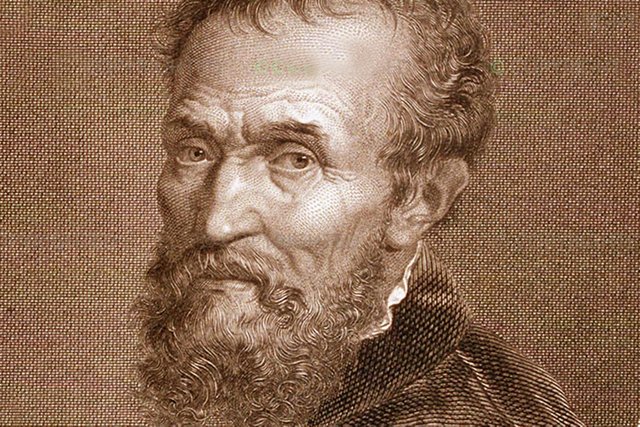
Painter, sculptor, architect, and Italian poet. His artistic achievements had the greatest impact on the arts center in his time and during the later European artistic stages. He took from the human body a basic theme in art. He believed that art originated from internal feelings influenced by the environment in which the artist lives. With the men of the European Renaissance and one of the greatest artists of all time.
**Buonarroti Statue :
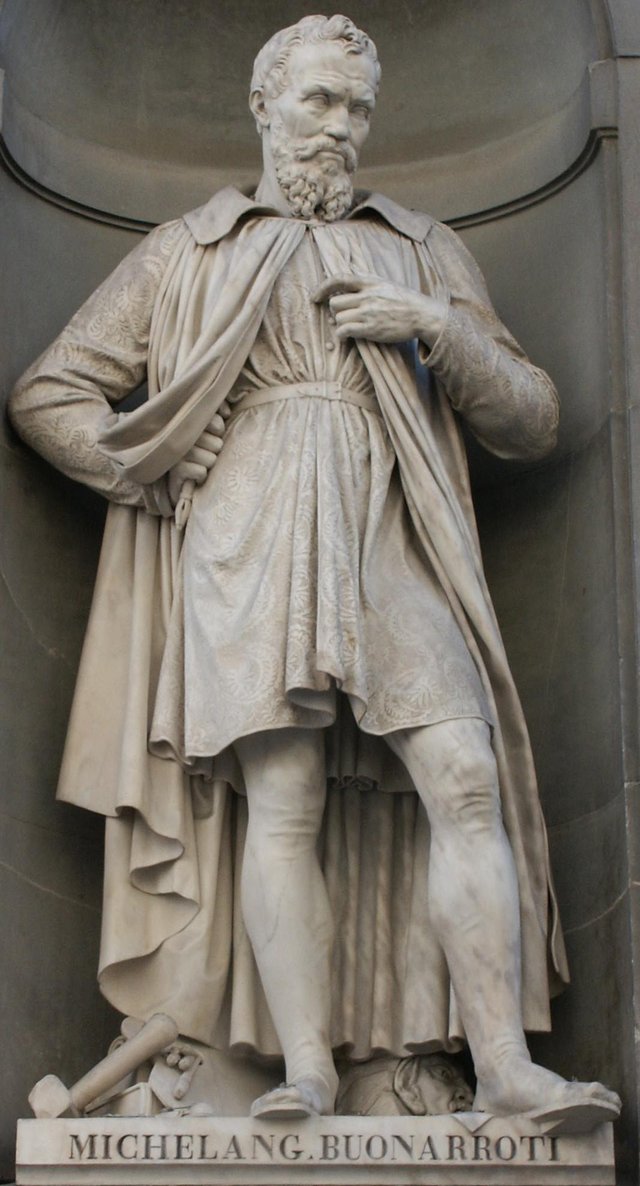
Michael Angelo Bonarotti was born on 6 March 1475, in the village of Capriz in Florence, Italy. He was 12 years old and was educated by Domenico Gidlantago, the most famous Florentine painter of the time, but he was unable to agree with this teacher and often entered him, who finished his work less than a year later. Angelo was trained on sculpture under the tutelage of the famous sculptor Donatello ".
***David Statue :
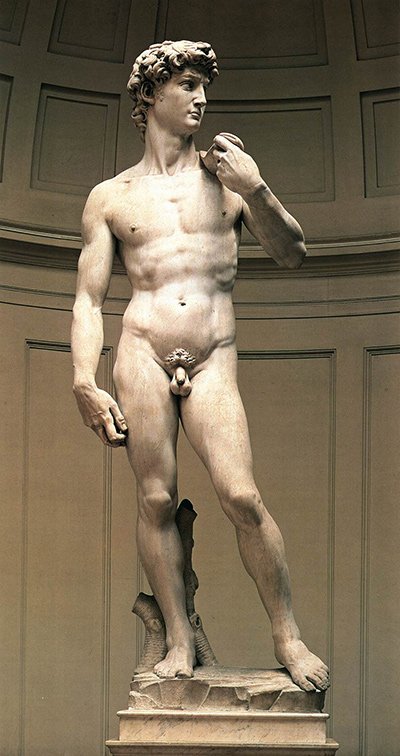
Michael Angelo was always looking for a challenge, whether it was a physical or mental challenge. Most of the subjects he worked on required a great effort, whether it was plaster paintings or paintings. He chose the most difficult situations of painting. Through the integration of different classes into one image, and most of its meanings were derived from myths, religion, and other subjects.
***Pieta Statue:
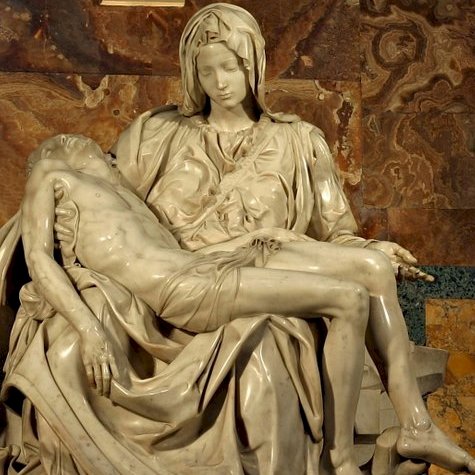
Michael Angelo had an amazing ability to overcome the obstacles he had set for himself in making his own masterpiece, but he often left his work as if defeated by his own ambition. He completed two of his greatest sculptures - the Statue of David, the Statue of Pitta, the Virgin and under the age of thirty - His recent works were inspired and inspired by the Christian religion, such as the Crucifixion of Christ.
***Bacchus Statue:
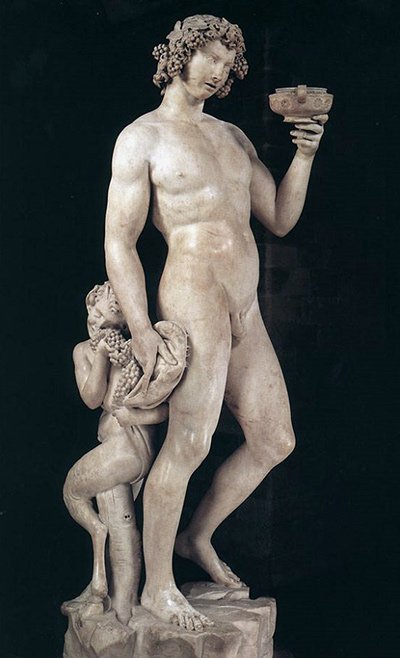
During the course of his career, Michael was introduced to a group of intellectuals who had great social influence. They were his shepherds, whom Michael had always sought to be acceptable to because he knew they were the only ones who could make his work a reality.
***Apollo Statue:
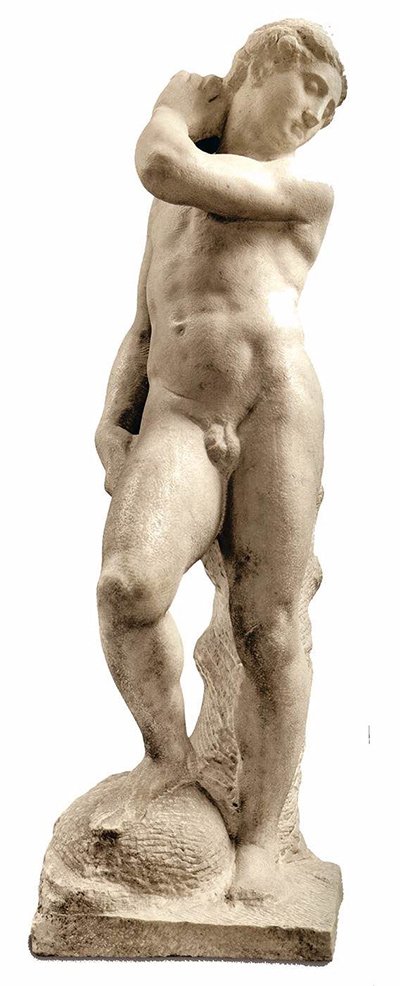
Angelo considered art to be a work of great effort and hard work. Most of his work required a great deal of effort and a large number of workers, and he rarely preferred the normal painting that could be done with clean clothes. This vision is one of his contradictions that made him develop himself from craftsman to genius He created it himself.
In his lifetime, Michelangelo attempted to destroy all the paintings he had painted. Only a few paintings remained, including a painting on the name of a study of the male trunk completed by Angelo in 1550 and sold at Christie's auction house for about $ 4 million. Few to the recent works of Michelangelo which seem to have been attached to the personality of Christ.
***Bearded Slave Statue:
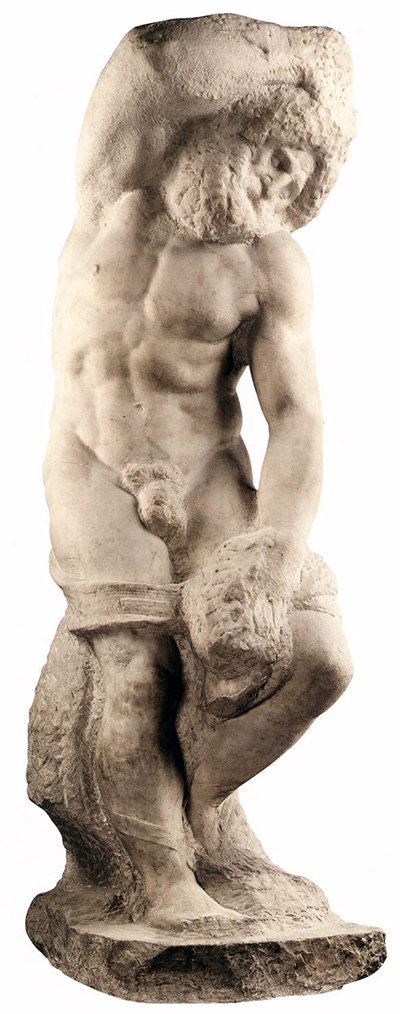
Michael Angelo dedicated much of his time to architecture and poetry. In 1546 Pope Paul III appointed him an architect of St. Peter's Church, where he worked without pay, but did not complete the project and completed it. After 1538, Michelangelo designed the Roman Center and the building His most recent work, after he was 75 years old, was frescoes at St. Paul's Basilica in the Vatican, and Angelo wrote many poetic poems.
***Crouching Boy Statue:
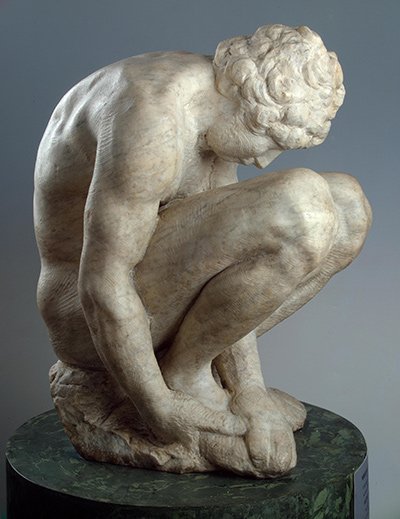
Although painting is a secondary concern at Angelo, he was able to paint giant frescoes that greatly influenced the European art scene, such as depicting the story of Genesis in the Old Testament on the roof of the Sistine Chapel, and the Doomsday painting at the Sistaite Church in Rome.
Michelangelo was the only artist whose biography was written by historians while he was alive. Historian Giorgio Vazari wrote his biography while he was alive. Fazari described Angelo as the epitome of Renaissance artists, influencing his contemporaries and his influences with profound influences, becoming his own style. A school and a movement of art depends on the amplification of Michael's methods and principles exaggerated until the end of the Renaissance was this school draws its principles of Michael's drawings with complex positions and flexibility elegant, and died this great artist in 1564.